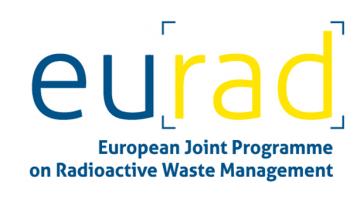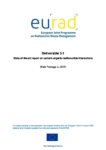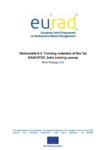CORI: Cement-organic-radionuclide interactions
CORI is an RD&D Work Package (WP) within EURAD. It aims to improve understanding of the role of organics (either naturally occurring or introduced by the wastes) and their influence on radionuclide migration in cement-based environments.
Overview
CORI was selected for inclusion in the first phase of EURAD as it relevant to Theme 4 “Geoscience to understand rock properties, radionuclide transport and long-term geological evolution” of the EURAD Roadmap.
Due to the potential degradation of organic matter, understanding their influence on radionuclide migration is particularly challenging in cementitious environments. Due to the importance of this subject in national programs, similar work to that addressed by this WP has previously been conducted (for instance, the meetings of the former TSWG in May 2013, Ghent, Belgium, leading to the CEBAMA project, or the extended discussion on CORI at the 6th IGD-TP Exchange Forum (2015) in London, UK). Over this period, partners were eager to join forces for a strong improvement in scientific understanding allowing assessing long term radionuclide mobility in organic rich cementitious waste disposal environments.
Objective
CORI aims to develop an in-depth understanding of the interaction of cementitious materials with omnipresent organic matter and with radionuclides. Organic materials are present in some nuclear waste and as admixtures in cement-based materials, and can potentially influence the performance of a geological disposal system, especially in the context of low and intermediate level waste disposal. The potential accelerating effect of organic molecules on radionuclide migration is related to the formation of complexes in solution with some radionuclides of interest (actinides and lanthanides) which can (i) increase the radionuclide solubility and (ii) decrease the radionuclide sorption. CORI’s raison d’être is to quantify the organic release issues which can accelerate radionuclide migration in the context of the post-closure phase of geological repositories for ILW and LLW/VLLW, including surface/shallow disposal.





